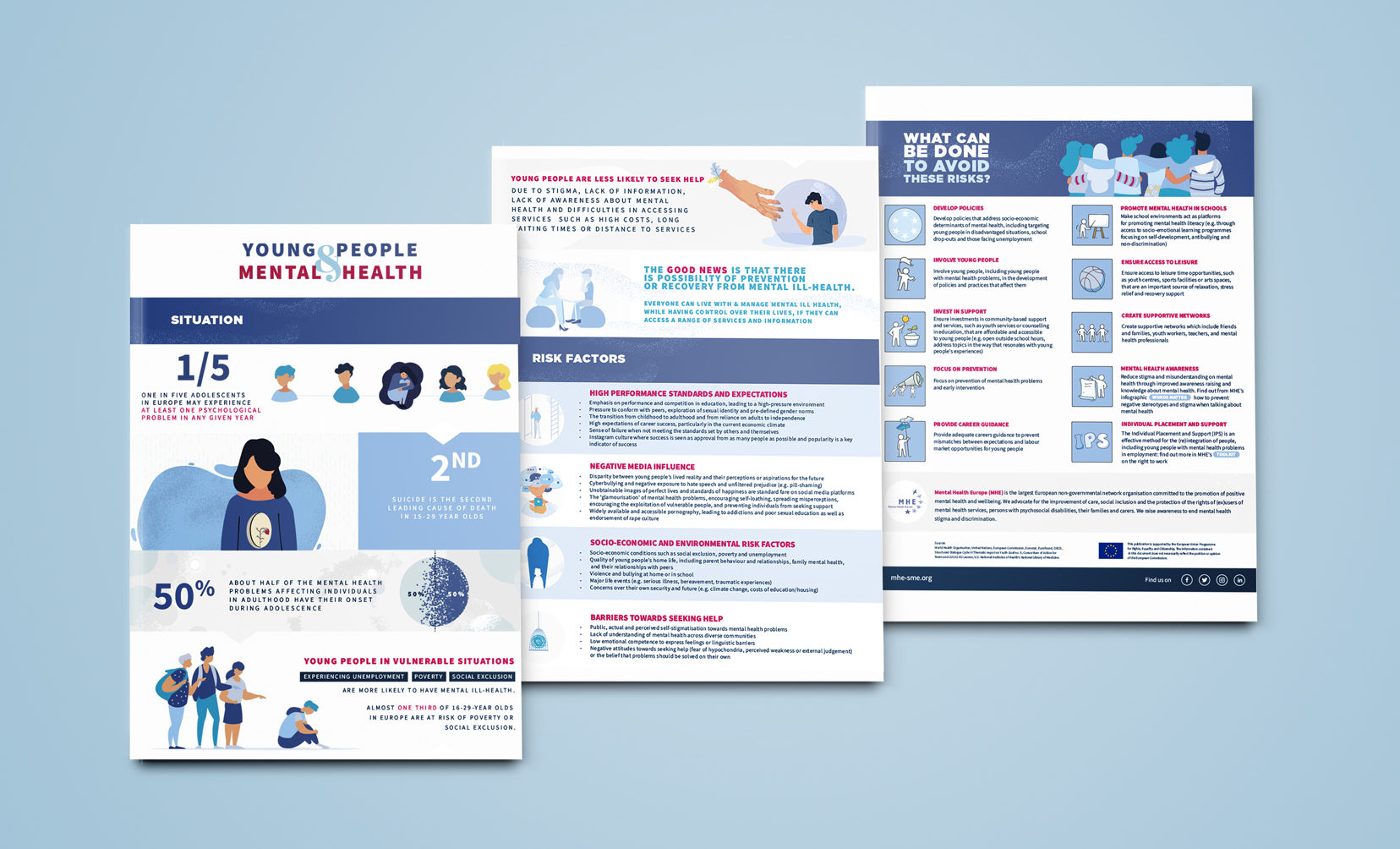Young people and mental health: new infographic explains how to help adolescents thrive

Brussels, 12 August 2019 – On International Youth Day, Mental Health Europe releases a new infographic with guidance on how to promote young people’s mental health. The infographic outlines recognized risks for adolescent mental health and explains what can be done so that adolescents have the opportunity to thrive.
Adolescence is a critical, transformative time of life. Positive mental health and wellbeing can ease young people’s physical and emotional transition from childhood to adulthood. Yet, one in five adolescents in Europe are affected by at least one psychological problem each year. Depression is one of the leading causes of disability among adolescents and suicide is the second leading cause of death in 15-29 year olds. Although mental ill-health is at least as prevalent among young people as among adults, adolescent mental health has been often overlooked. The consequences of not addressing young people’s mental health can have far-fetching implications to both present and future, limiting their opportunities to lead healthy and fulfilling lives as adults.
Claudia Marinetti, Mental Health Europe’s Director commented:
“With half of all mental health problems starting by the age of 14, it is crucial to act early. Timely and effective interventions can yield lifelong benefits and minimise adverse effects on young people’s development, health, education and employment. If we want to see the next generation grow into healthy and well-adjusted adults, we must invest in prevention and support for young people, promote mental health in schools and develop policies that address socio-economic factors of mental ill health, such as poverty or social exclusion.”
Dominique de Marné, Youth Policy Advisor at Mental Health Europe said:
“If only I knew when I was younger that what I was experiencing was my mental ill health, I might have found help and hope earlier. There was just not enough information and prevention. To change this, we need to talk to children and young people about feelings and self-care rather than focusing on “pressure”, “quick pace” and “high expectations”. Teaching kids that it’s OK not to be OK can help them build skills and resilience. This way, a mental health problem does not become a mental illness, but a problem to talk about with somebody.”
This infographic is accompanied by a guidance note summarising the role of the EU Youth Strategy vis-à-vis mental health. It explains what the European Youth Strategy is and how it will be implemented during 2019-2027. This note also focusses on the European Youth Goal 5 on Mental Health & Well-being and its realisation through the EU Youth Strategy.
Stay connected
Get our latest news, personal stories, research articles, and job opportunities.